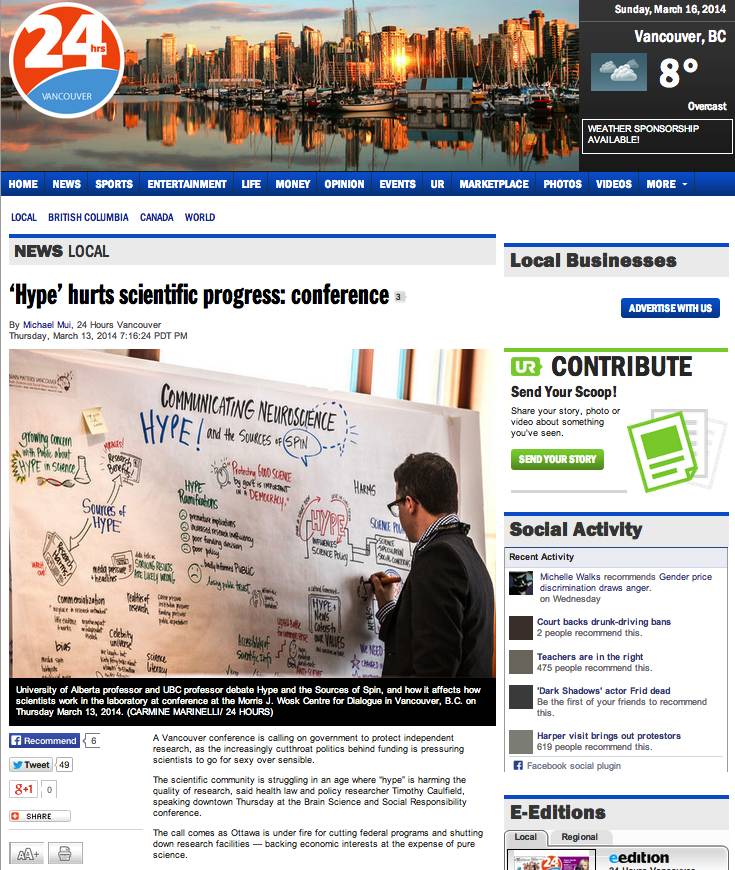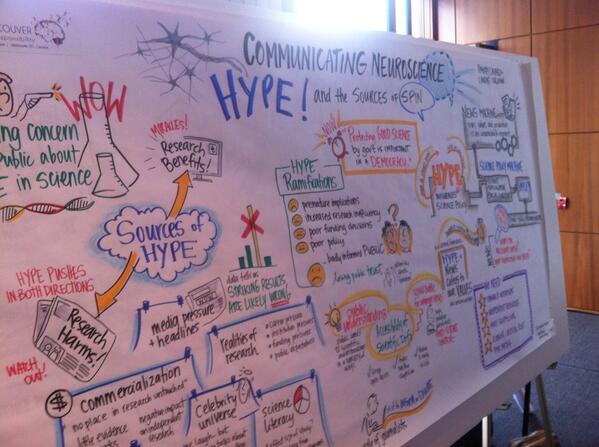knowledge translation at Brain Matters in the news
Graphic recording is great for knowledge translation, and it was featured in the 24 hours newspaper this week. Scientist Timothy Caufield wants us to see through the hype in science research, and my visuals were featured alongside his recent Brain Matters talk. The talk was part of a two day conference on brain science and social responsibility. My job was to listen to leading experts in neuroethics and translate their talks into visuals.
Article link: http://vancouver.24hrs.ca/2014/03/13/hype-hurts-scientific-progress-conference.

 And a snapshot of the ‘after’ visuals, about 45 minutes later.
And a snapshot of the ‘after’ visuals, about 45 minutes later.
Three great highlights stood out at this conference. First, I didn’t know anything about neuroethics before this conference (um, in my life it’s not really a topic around the dinner table!?) but I learned just how neuro-ethical decisions do touch many areas of society that I care about. Is chemical-based rehabilitation for criminals coersive? Should we redesign education to better suit the adolescent brain? What’s the role of neuroethics in state security? How do we use brain imaging to measure subjective pain? How can these questions not be fascinating…
Second, presenters were really excited to see a fresh perspective on their research presentations. Academic conferences use visuals, but they’re usually powerpoint. Their talks were “translated” (what health/science calls knowledge translation) into graphic recordings, right in front of them.
And finally – I had the absolute pleasure of working with Avril Orloff. This conference needed two graphic recorders due to the schedule – and what a treat! Together, we created 13 eight-foot images in total, and for some talks we worked in tandem. Conference organizers will make the images available soon.